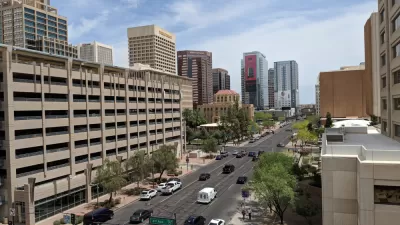PlaceMatters has partnered with the National Charrette Institute on a number of occasions, providing trainings and giving panel presentations at conferences. One of our common themes is "High Touch, High Tech Charrettes." During the sessions we talk about the advantages of low tech and when it makes sense to bring in high tech. Below I have embedded a video that is a montage of clips filmed during a downtown revitalization Charrette in Wichita Kansas. In this project, PlaceMatters partnered with Goody Clancy to help residents go through a series of exercises including keypad polling and mapping exercises to brainstorm about the future of downtown Wichita.
PlaceMatters has partnered with the National Charrette Institute on a number of occasions, providing trainings and giving panel presentations at conferences. One of our common themes is "High Touch, High Tech Charrettes." During the sessions we talk about the advantages of low tech and when it makes sense to bring in high tech.
Below I have embedded a video that is a montage of clips filmed during a downtown revitalization Charrette in Wichita Kansas. In this project, PlaceMatters partnered with Goody Clancy to help residents go through a series of exercises including keypad polling and mapping exercises to brainstorm about the future of downtown Wichita.
It's a short, non-narrated video that gives you a sampling of the conversations that took place. This video is a tribute to going low tech.
Low Tech Mapping Exercise - Downtown Revitalization on Vimeo.
Everyone's familiarity with pen, paper, strings, and glue means people of all ages and backgrounds are comfortable jumping into the exercise.
So why would you bring technology into a process like this at all? It is important to think about technology from the perspective of what can we accomplish with the simplest of materials and then think about what's missing (a.k.a. the appropriate technology approach to planning). Often the answer is "not much" and therefore you should keep it simple and keep it low tech. Box City is a favorite of ours if you want go low tech/high touch.
So what's the holy grail of high touch-high tech decision making? Here are some quick thoughts:
- During the creative process, technology would be nearly invisible. As much as possible, technology would not take away from the tactile, intuitive aspects of a group mapping exercise like the one shown above but would enhance the outcomes. ULI's Reality Check [add link] is another example where Lego blocks representing jobs and housing are placed on a map to think about where and how to grow smart. Tallying the Lego blocks and then entering them into GIS analysis then makes it possible to report back to participants how different strategies positively and negatively affected important indicators of livability, economic viability, and sustainability.
- The technology would provide useful information at the right time and at the right level to inform and inspire participants and help them move towards consensus on issues and idea. My posting on Gaggle Googling is one example of where technology helped improve the discussion making process in a group setting.
- The technology helps people experiment with different approaches and get quick feedback on choices. Feedback includes being able to hear from others on whether or not an idea resonates with others (e.g. using keypad polling to see which strategies have the most support) as well as impact analysis tools that can quantify and display the impacts of choices (e.g. the cost of infrastructure added).
this blog was cross posted on PlaceMatters.

Maui's Vacation Rental Debate Turns Ugly
Verbal attacks, misinformation campaigns and fistfights plague a high-stakes debate to convert thousands of vacation rentals into long-term housing.

Planetizen Federal Action Tracker
A weekly monitor of how Trump’s orders and actions are impacting planners and planning in America.

In Urban Planning, AI Prompting Could be the New Design Thinking
Creativity has long been key to great urban design. What if we see AI as our new creative partner?

Portland Raises Parking Fees to Pay for Street Maintenance
The city is struggling to bridge a massive budget gap at the Bureau of Transportation, which largely depleted its reserves during the Civd-19 pandemic.

Spokane Mayor Introduces Housing Reforms Package
Mayor Lisa Brown’s proposals include deferring or waiving some development fees to encourage more affordable housing development.

Houston Mayor Kills Another Bike Lane
The mayor rejected a proposed bike lane in the Montrose district in keeping with his pledge to maintain car lanes.
Urban Design for Planners 1: Software Tools
This six-course series explores essential urban design concepts using open source software and equips planners with the tools they need to participate fully in the urban design process.
Planning for Universal Design
Learn the tools for implementing Universal Design in planning regulations.
Gallatin County Department of Planning & Community Development
Heyer Gruel & Associates PA
JM Goldson LLC
City of Camden Redevelopment Agency
City of Astoria
Transportation Research & Education Center (TREC) at Portland State University
Jefferson Parish Government
Camden Redevelopment Agency
City of Claremont






























